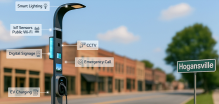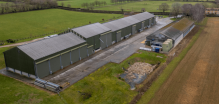Other areas below the national average include boroughs such as Southwark, Westminster and Lambeth. Campaigners claim the findings will put pressure on the industry to increase broadband speeds across the country. The findings were sourced from average speeds reported by internet users in each local authority, which shows the real service customers are dealing with and not just maximum available speeds.
According to the Department for Culture, Media and Sport (DCMS), Which?'s data does not reflect the speeds that households could achieve in the UK. The consumer group's figures showed Southwark in South East London recording average speeds of 10.4 megabits and Westminster recorded 12.9, both below the nationwide average of 17 megabits, The Telegraph reported.
Rural broadband coverage is said to have been prioritized in recent years by Ministers who are introducing a "universal service obligation" that will come into effect in 2020. The obligation will force internet providers to offer speeds of 10 megabits, which is roughly enough to download a film in just under 15 minutes.
Other cities in the UK such as Hull and Canterbury fell well below the national average, according to Which?'s figures, and less than half the average in the fastest areas, which include Tamworth in the West Midlands and Adur on the south coast boasting more than 30 megabits.
Which?'s Alex Neill said: "Far too many households across the UK are suffering from slow broadband speeds, which can stop them being able to carry out essential daily tasks." Neill predicts the figures will "put pressure on the government and providers to help everyone get a good broadband connection."
"Superfast Broadband is now available to 93 percent of the UK, and we are reaching thousands more homes and businesses every week," said a spokesperson for the DCMS, defending against Which?'s findings. "These figures don't show what broadband is available - they show many people haven't taken up speeds that are already available to them."
The government has admitted, according to The Telegraph, that urban constituencies can be underserved by high-speed broadband. This is because state aid rules prevent investment being put into areas where BT and others have announced network upgrades, and some inner city areas have few residential households because of the high number of businesses, making internet providers less concerned about providing residential access.
Busy towns can also make installing improved equipment more difficult due to issues of accessibility and the high cost of street-works.


















